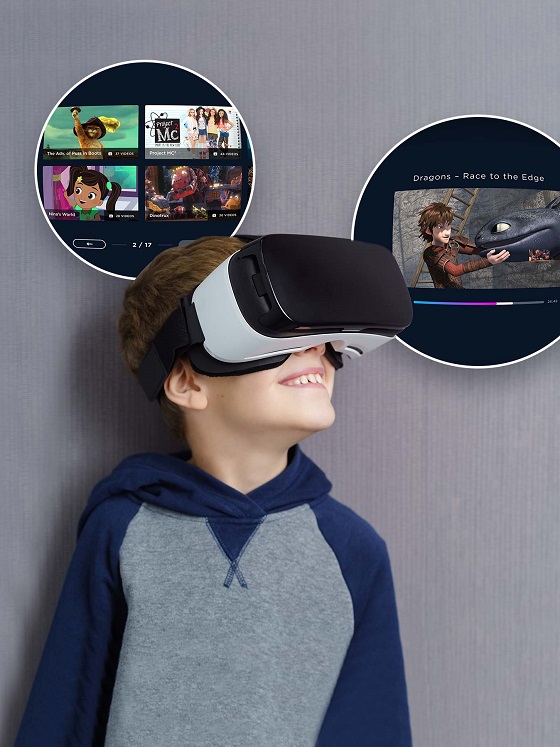USA,CAMBRIDGE, Mass October 20, 2021
Luminopia, a digital therapeutics company, today announced that the U.S. Food and Drug Administration (FDA) has granted de novo premarket approval for Luminopia One as a prescription therapy to improve vision in children with amblyopia (lazy eye), the leading cause of vision loss in children.
Luminopia One is indicated for improvement in visual acuity in children with amblyopia, aged 4-7, associated with anisometropia and/or with mild strabismus, having received treatment instructions as prescribed by a trained eye-care professional. Luminopia One allows patients to watch therapeutically modified TV shows and movies to improve their vision within a virtual reality (VR) headset. This is the first FDA-approved digital therapeutic for children with amblyopia, and more broadly, the first for a neuro-visual disorder.
To develop a new therapeutic approach for patients, Luminopia partnered with leading clinicians and researchers at Boston Children’s Hospital and the Picower Institute for Learning and Memory at MIT, as well as beloved media companies like Sesame Workshop, Nelvana and Millimages. With Luminopia One, patients can choose videos to watch from a selection of 700+ hours of popular, engaging and educational content. Proprietary algorithms modify the selected videos in real-time within a VR headset to promote weaker eye usage and encourage patients’ brains to combine input from both eyes.
Luminopia One was granted approval based on positive data from multiple clinical trials, including a phase 3 pivotal trial recently published in OphthalmologyⓇ, the journal of the American Academy of Ophthalmology, demonstrating the therapeutic’s safety and efficacy in amblyopia patients aged 4-7. This study was the first successful randomized controlled trial of a new amblyopia therapy in more than a decade, and the first to show efficacy of a novel, binocular approach.
In this phase 3 trial, 105 children were randomized to either the treatment group, which received Luminopia One plus glasses, or the control group, which received glasses alone. A statistically significant difference in visual acuity improvement between groups was seen as early as 4 weeks. At the 12-week primary endpoint, the weak eye visual acuity of patients in the treatment group improved 1.8 lines on average on a logMAR eye chart, compared to a 0.8-line improvement in the control group. The difference between groups in improvement was significant (p=0.001).
In addition, 62% of patients in the treatment group showed a strong response, defined as a 2-line or greater improvement, versus 33% in the control group. Importantly, 84% of patients in the treatment group had a history of patching or atropine therapy and were still left with amblyopia, and Luminopia One was as effective in this subgroup of patients. Median adherence to the prescribed dosage was 88% over the study period, substantially higher than the 48% adherence seen in similar studies with patching.2
The study was conducted at 21 academic and community sites in the U.S., including the Cleveland Clinic, UCLA Jules Stein Eye Institute, Duke Eye Center, Ann & Robert H. Lurie Children’s Hospital of Chicago, Texas Children’s Hospital and Children’s Hospital of Philadelphia. No serious adverse events were reported.
The company expects to launch Luminopia One in the second quarter of 2022, and the therapeutic will be prescribed by eye care professionals for 1 hour per day, 6 days per week, for 12-week periods, and used at home by patients. Luminopia is engaging with regional and national payers throughout the U.S. to pursue coverage for the therapeutic as a pharmacy benefit to ensure access for children and families in need of new amblyopia therapies.


Amblyopia, a condition which affects 3% of all children, develops when the brain and the eyes stop working together properly, causing the brain to rely more heavily on one eye over the other, and leading to worse vision in the weaker eye.1 Amblyopia is conventionally treated with glasses combined with eye-patching or blurring (atropine) eye drops that prevent usage of the stronger eye and force usage of the weaker eye, but these approaches do not train the eyes to work together. Poor patient compliance and social stigmas also present significant challenges with these existing treatment options.
SOURCE
https://www.businesswire.com/news/home/20211020005896/en